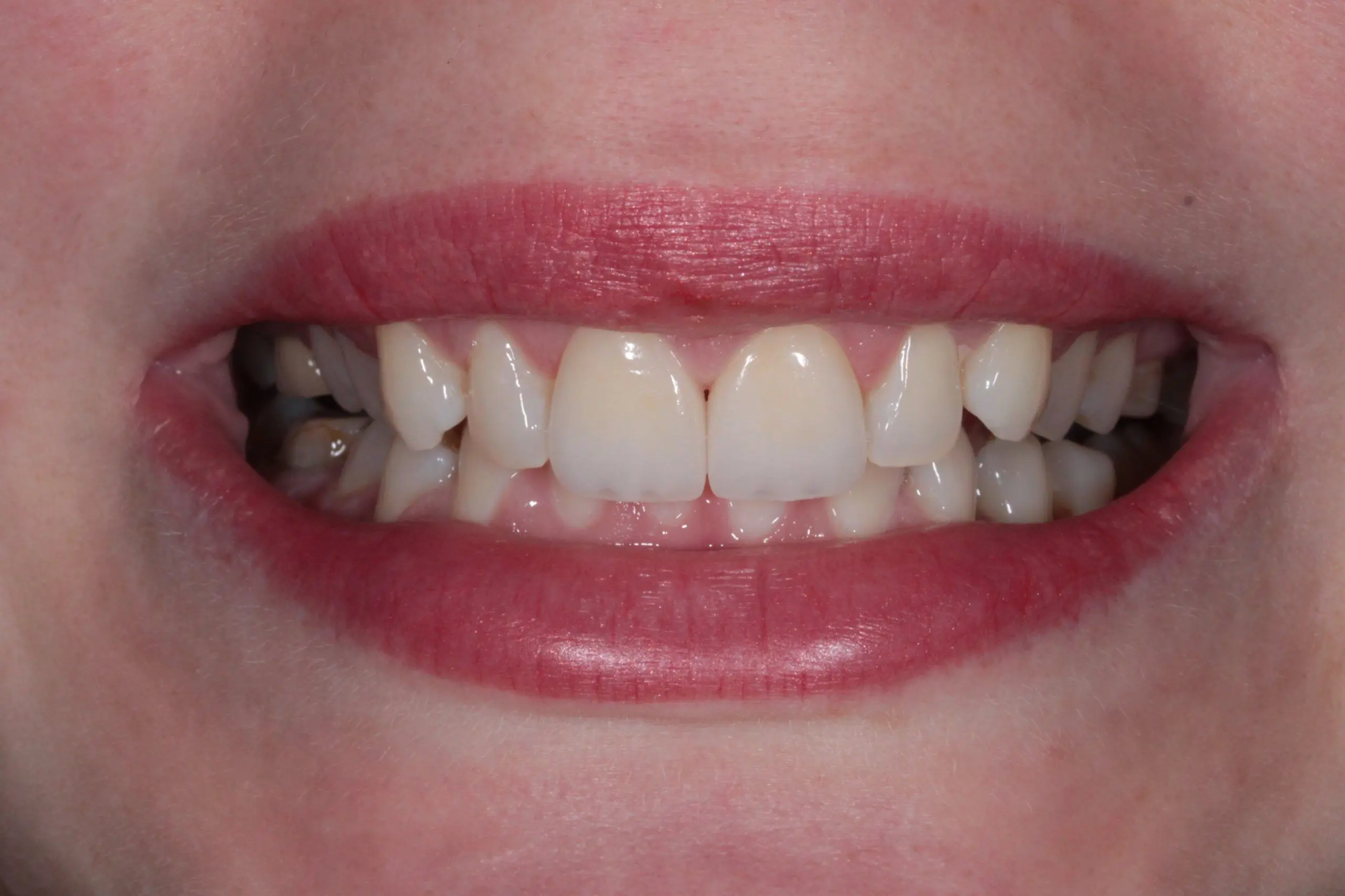Smile Aesthetics
Compatibility of teeth and gums with lips and face is necessary for an aesthetic smile.
The relationship between the lips and teeth is examined in the resting state of the lips or in a full smile. Ideally, 4 mm teeth should be visible at rest, 2 mm distance between the tip of the teeth and the lower lip, and a maximum of 2 mm gingival band should be seen when smiling.
The appearance of too many gums in a smile is called a gummy smile. With gingival leveling, lengthening of teeth, orthodontic treatment or botox applications, excess gingival appearance is reduced.
An example of a smile where the tooth arch is not compatible with the lip arch, excessive and asymmetrical gingival appearance in the posterior regions.


Smile in which the tooth arch and lip arch are compatible but with insufficient gingival appearance.
Another important factor is the width of the smile.
There should be no dark corridors between the teeth and the lips in a smile
Despite the narrow smile width, ideal gingival appearance and smile line compatible with the lower lip.


When viewed from the profile, it is desirable that the upper incisors are neither too far ahead nor too far behind the upper lip. Teeth that are too far ahead have a protruding appearance and are prone to impact. The upper incisors and upper lip that are too far back do not support the upper lip adequately and generally show an aged appearance.
The ideal upper incisor lip relationship from the profile In order to design smile aesthetics, individual teeth and gums should be examined and a personalized planning should be made. To achieve the ideal smile, the first option that comes to mind is orthodontic treatments that preserve the naturalness of the teeth and bring them to the ideal position..
After orthodontic treatment, porcelain laminae and gingival leveling procedures are frequently applied to optimize the shape and color of the tooth as a complement and to provide gingival aesthetics.



